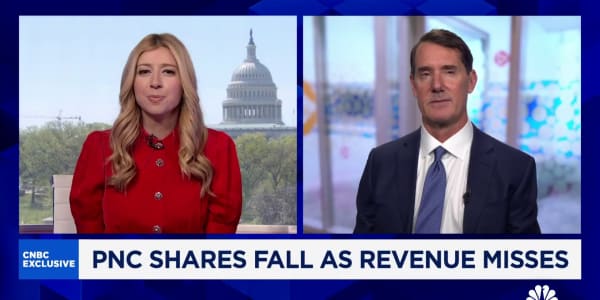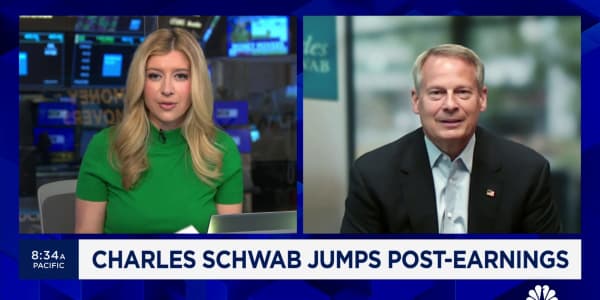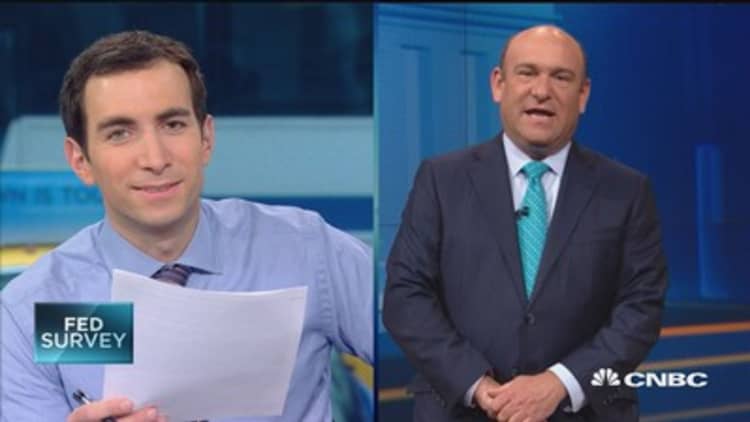
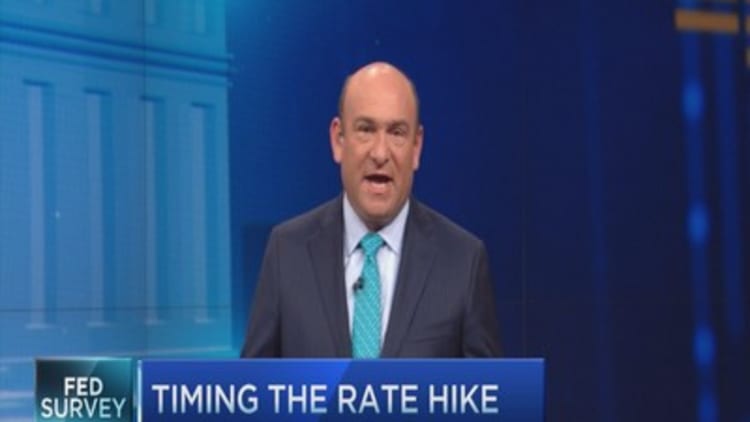
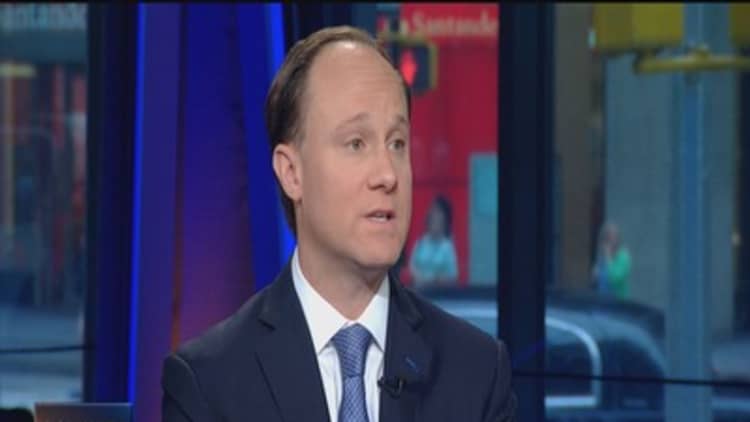
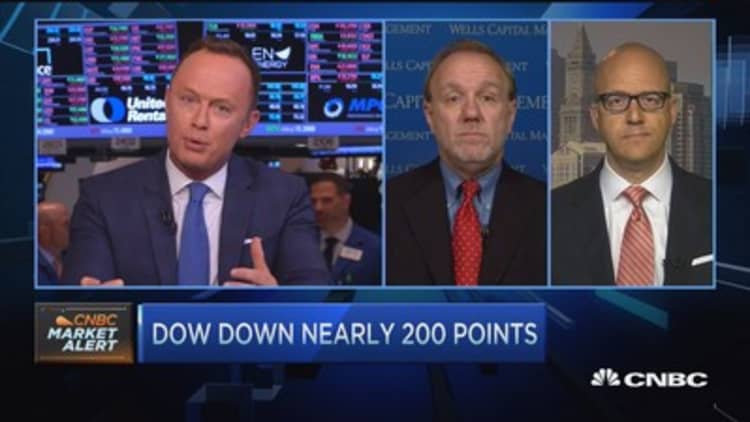
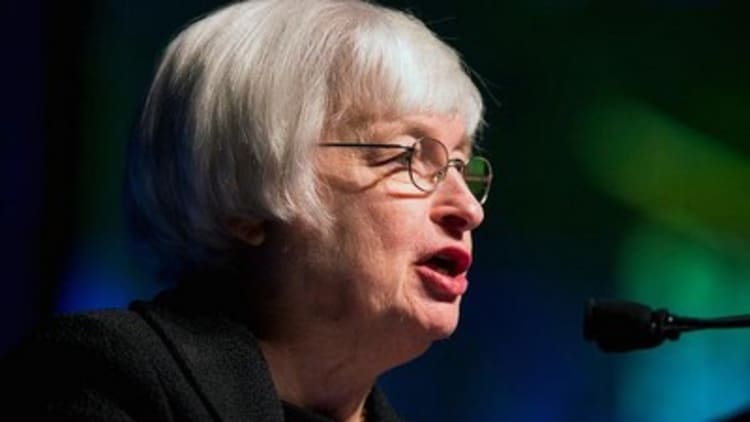
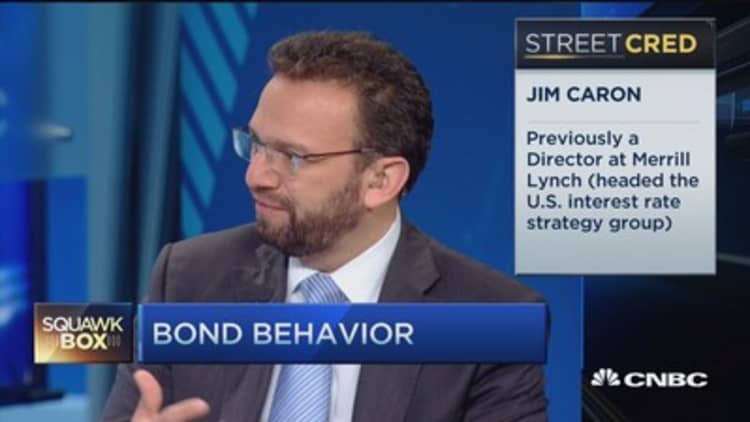
In trying to steer the economy of 2015, the Federal Reserve is fighting the foreboding spirit of 1937.
Wall Street strategists, in fact, are worried that the U.S. central bank is so cautious over not making the mistakes of a long-ago ancestor that it may miss a solid opportunity to normalize monetary policy after seven years of decidedly abnormal times.
"Many policymakers and market observers assert that the risk of the Fed raising rates too early exceeds that of moving too late. This is the specter of 1937, when the Fed raised rates prematurely and exacerbated the Great Depression," Michael Arone, managing director and chief investment strategist at State Street Global Advisors, said in an analysis for clients titled "Why the Federal Reserve Needs to Bury the Ghost of 1937."
"Most investors assume the prevailing lower-for-longer consensus is bullish for both equities and bonds," he added. However, Arone said his "view is that a tardy Fed has a good chance of proving bearish for bonds and, longer term, for equities as well."
The Fed's Open Market Committee gathers this week at a meeting that only a few months ago was expected to include the first rate increase in nine years. However, slower-than-expected economic growth has taken some of the urgency off the expected tightening.
Now, traders at the Chicago Mercantile Exchange aren't pricing in a hike until December. While Arone said he doesn't think the Fed should move now, he believes the risks of waiting too long outweigh those of tightening too soon.
"Risks in this environment are growing, not shrinking," he said. "The longer the Fed stays on this path, the more aggressively it may have to tighten and the crueler the asset price adjustment will be when it finally comes."
What's causing much of the consternation is fear that, like 1937, a desire to avoid bubbles and normalize rates will come too soon and plunge the economy back into a slump. The Fed took its short-term rates target down to zero amid the financial crisis and the Great Recession, and has been there since late 2008.
However, that recession officially ended in 2009, yet the central bank has not moved on policy. In addition to zero rates, it has boosted up its balance sheet to $4.5 trillion in a liquidity program whose effect has been to pump up the stock market by 220 percent.
Arone insists the 1937 versus 2015 comparison is not a valid one: Back then, consumer prices were falling and unemployment was rising, whereas the dynamic is the exact opposite now. The more relevant comparison, he said, would be 1999, where the Fed kept its foot on its pedal during the runaway dot-com bubble.
Read MoreHow the Fed screwed up the bond market
"The Fed waited too long to raise rates in 1999. Inflation already started accelerating before the first rate hike," he said. "As a result, it had to tighten faster than would have otherwise been necessary. Five quarter-point rate hikes later and just nine months after the first hike, the stock market bubble burst."
The hope for this time, obviously, is that the road proves smoother.
One obvious reason for collective skittishness is that the Fed has never been down the easing road quite this far. While it's done plenty in the past to grease the monetary skids, staying this low for this long and expanding the balance sheet so far is without precedent.
Consequently, the escape route is going to be bumpy. The best investors likely can hope for is that it's not as bad as other times in the past.
"The Fed's exit from zero in 2015 will prove far less dramatic than in 1937: investors today have been raised on a dovish not a hawkish Fed; inflation is perceived to be under control, underscoring Fed credibility; and investor faith in economic recovery is bolstered by a virtuous cycle of rising housing activity, bank lending and small-business activity," Michael Hartnett, chief market strategist at Bank of America Merrill Lynch, said in a note that expresses the most optimistic aspects of Wall Street sentiment.
Read MoreFed policy helping rich get richer: BlackRock pro
"Our tactical view is that until the U.S. macro is unambiguously robust enough to allow the Fed to hike safely, investors will be cursed by mediocre returns, vicious trading rotation and flash crashes," he added.
Indeed, companies that have counted on cheap debt to keep borrowing costs low and pump up earnings face a more challenging future. Hartnett advises clients to watch bank stocks; if they gain in a rising-rate environment, then Fed policy is working. If not, look out.
Economic conditions have changed dramatically since the zero rate policy began. Household net worth has gone from $62.5 trillion in 2010 to $84.9 trillion in 2015. Unemployment—albeit with a big assist from a tumbling labor force participation rate—has fallen from 10 percent to 5.5 percent.
The consumer credit default rate has fallen below 1 percent from 5.5 percent in May 2009, according to S&P Capital IQ, which believes the path is clear for the Fed to hike in 2015.
Though it's against the backdrop of an economy that is likely to miss hopes for a 3 percent gain this year, the conditions are a far cry from what inspired the crisis-level policies.
"Near-zero rates no doubt helped end the Great Recession," said State Street's Arone. "But the U.S. economy is no longer under emergency conditions or facing the perils of 1937. Why then does it still require emergency monetary policy?"




